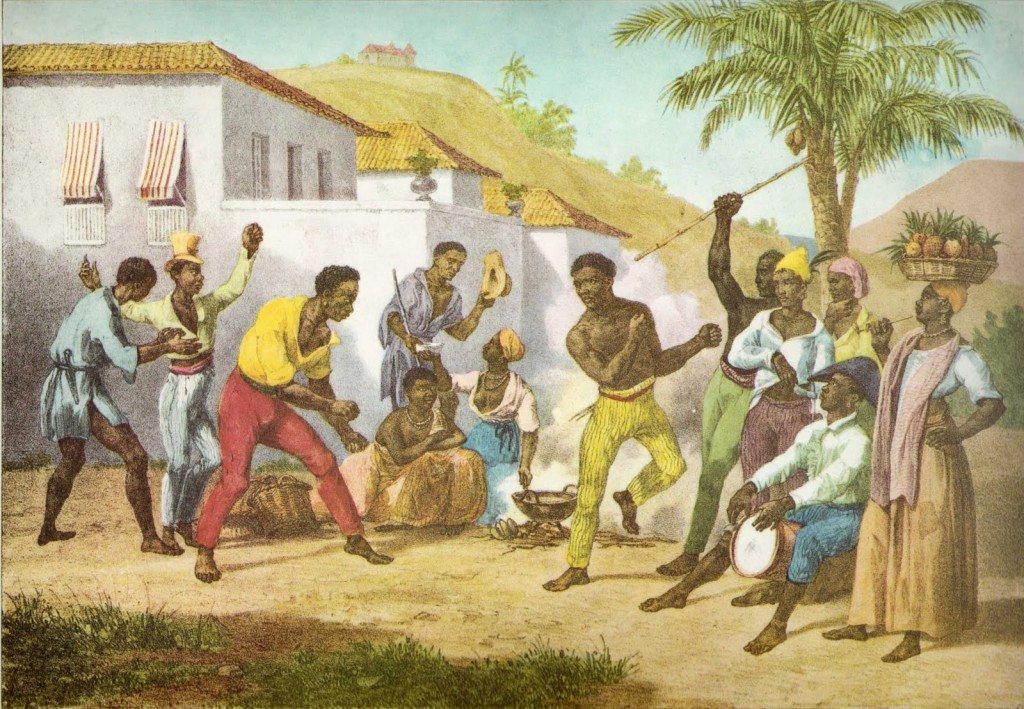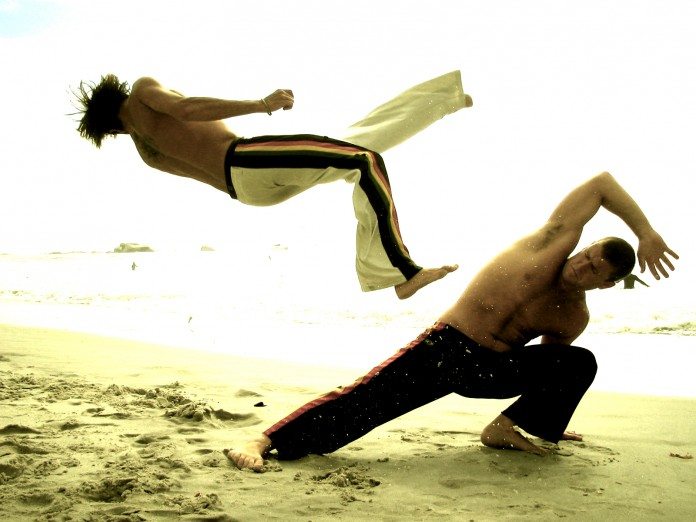Capoeira is a Brazilian martial art infused with dance. This form of martial arts focuses on punches, kicks and knees strikes as well as techniques to evade attacks. Capoeira is sometimes referred to as a dance, a martial art and in other circumstances, a game.
According to historians, capoeira was created by African slaves who were brought to Brazil by Portuguese colonialists. Since they were prohibited from celebrating their cultural practices and forbidden from engaging in any form of martial arts, the slaves came up with capoeira to bypass these oppressive laws. The Brazilian martial art is so fluid that the slaves practiced it in the presence of their masters in the pretense that they were dancing.
Though Capoeira may appear harmless, this martial art is a deadly fighting technique. Trickery and the need to be disguised are two aspects of the Brazilian martial art that separates this form of martial art from others. While kicks and other movements performed in this martial art are common in other arts, the delivery is what makes all the difference. There is so much deception and fake movements in Capoeira that opponents who are unfamiliar with its techniques rarely know what hit them.
 Apart from the unique deception and graceful moves, music is another aspect that makes Capoeira quite unique. Music is such a fundamental aspect of the art that without it, there is no Capoeira. When Capoeira enthusiasts are engaged in a match, people form a circle around the participants, clap their hands and sing. This approach is known as Roda, when it is combined with accompaniments such as Pandeiro or Agogo, it is called Bateria.
Apart from the unique deception and graceful moves, music is another aspect that makes Capoeira quite unique. Music is such a fundamental aspect of the art that without it, there is no Capoeira. When Capoeira enthusiasts are engaged in a match, people form a circle around the participants, clap their hands and sing. This approach is known as Roda, when it is combined with accompaniments such as Pandeiro or Agogo, it is called Bateria.
Even after Brazil gained independence, capoeira was still an illegal practice and was saved from near extinction by Mestre Bimba. Bimba is credited with rekindling the popularity of capoeira, highlighting the cultural significance of this Brazilian martial art and helping to make it a world-renowned art.











